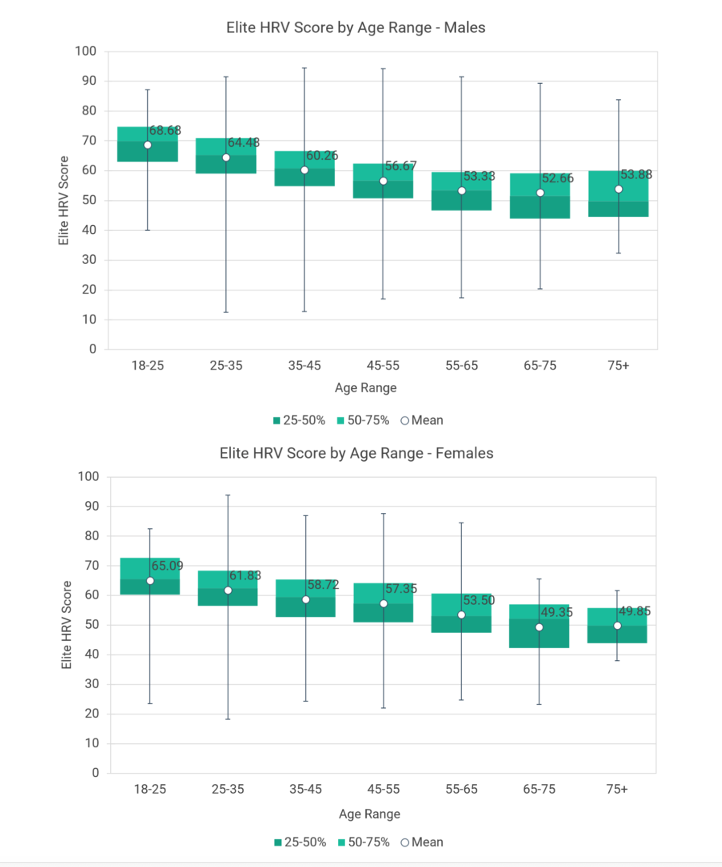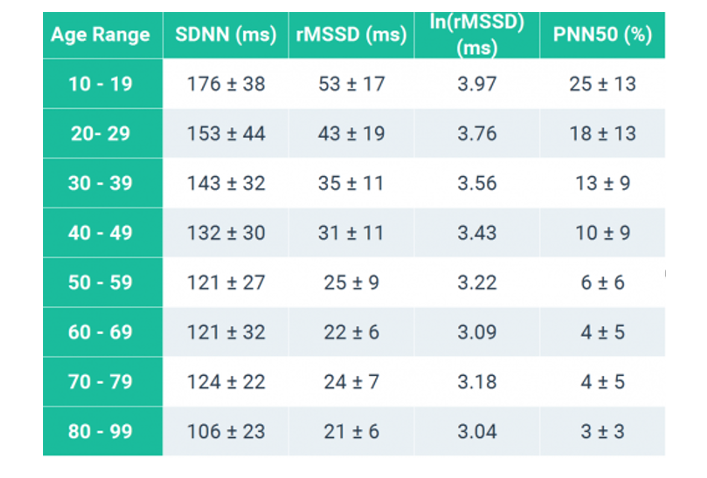Heart Rate Variability (HRV) in Autonomic Assessment
- Graham Exelby
- May 23
- 2 min read
Dr Graham Exelby May 2025
Overview:
Heart Rate Variability (HRV) reflects the dynamic interplay between the sympathetic and parasympathetic branches of the autonomic nervous system. It measures the variability in time intervals between heartbeats (typically R-R intervals on ECG) and provides a window into autonomic adaptability, vagal tone, and overall homeostatic balance. In the context of Long COVID, POTS, and dysautonomia, 24-hour Holter monitoring with HRV analysis offers a valuable method for autonomic phenotyping.


Source: Jason Moore: Normative HRV Scores by Age and Gender [Heart Rate Variability Chart] https://elitehrv.com/normal-heart-rate-variability-age-gender
SDNN by Age: Standard deviation of all normal R-R intervals over 24 hours. Reflects overall autonomic tone and is a global marker of HRV. Normal SDNN declines with age and is generally higher in females under 55 due to oestrogen-mediated vagal tone.

Source: Umetani K, Singer DH, McCraty R, Atkinson M. Twenty-four hour time domain heart rate variability and heart rate: relations to age and gender over nine decades. J Am Coll Cardiol. 1998 Mar 1;31(3):593-601. doi: 10.1016/s0735-1097(97)00554-8. PMID: 9502641.
Samples HRV (QML Holter):

Physiology and Mechanisms:
The parasympathetic nervous system (PNS) slows the heart rate and increases HRV via vagal activation of the SA and AV nodes.
The sympathetic nervous system (SNS) accelerates the heart rate and reduces HRV through adrenergic stimulation of cardiac myocytes.
HRV is highest when parasympathetic tone dominates and lowest during sympathetic dominance or vagal withdrawal.
Clinical Relevance:
Low HRV is associated with increased biological age, reduced resilience to stress, and poorer cardiovascular outcomes.
In Long COVID and dysautonomia, low SDNN and RMSSD are frequently observed, often with blunted circadian variation.
Autonomic rigidity (low HRV) may reflect brainstem dysregulation, vagal suppression, or persistent inflammatory signalling (e.g., TLR4, NF-κB activation).
Neurovisceral Integration:
The prefrontal cortex (PFC), insula, hypothalamus, and brainstem form a regulatory network that modulates HRV.
Hyperactivity in limbic regions or impaired PFC regulation may suppress vagal tone and shift the balance toward sympathetic dominance.
HRV serves as an accessible proxy for monitoring this brain–heart axis in conditions involving central sensitization, cognitive fatigue, and neuroinflammation.
Interpretation and Use:
24-hour HRV analysis provides better resolution of autonomic patterns than single-point ECGs.
Abnormal patterns may include:
Persistently low SDNN (<50 ms): Autonomic rigidity, common in POTS/Long COVID.
Absent nocturnal rise in HRV: Indicates failure of parasympathetic recovery during sleep.
Inverted circadian rhythm: Suggests central dysautonomia or limbic overactivation.
Application:
HRV profiling assists in treatment personalization (e.g., vagal stimulation, beta-blockade, pacing, neurocognitive retraining).
Consider SDNN trends alongside amino acid profiles and postural testing (NASA lean, standing ECG).
Use HRV to monitor therapeutic response to interventions like propranolol, LDN, nicotinamide,
Conclusion:
HRV, particularly 24-hour SDNN analysis, is a powerful non-invasive tool for assessing autonomic function and central integration in complex disorders such as Long COVID, POTS, and ME/CFS.
Its application bridges neuroimmune regulation, cardiovascular dynamics, and systemic resilience. Early HRV analysis can guide stratification, treatment planning, and long-term monitoring.

Comments